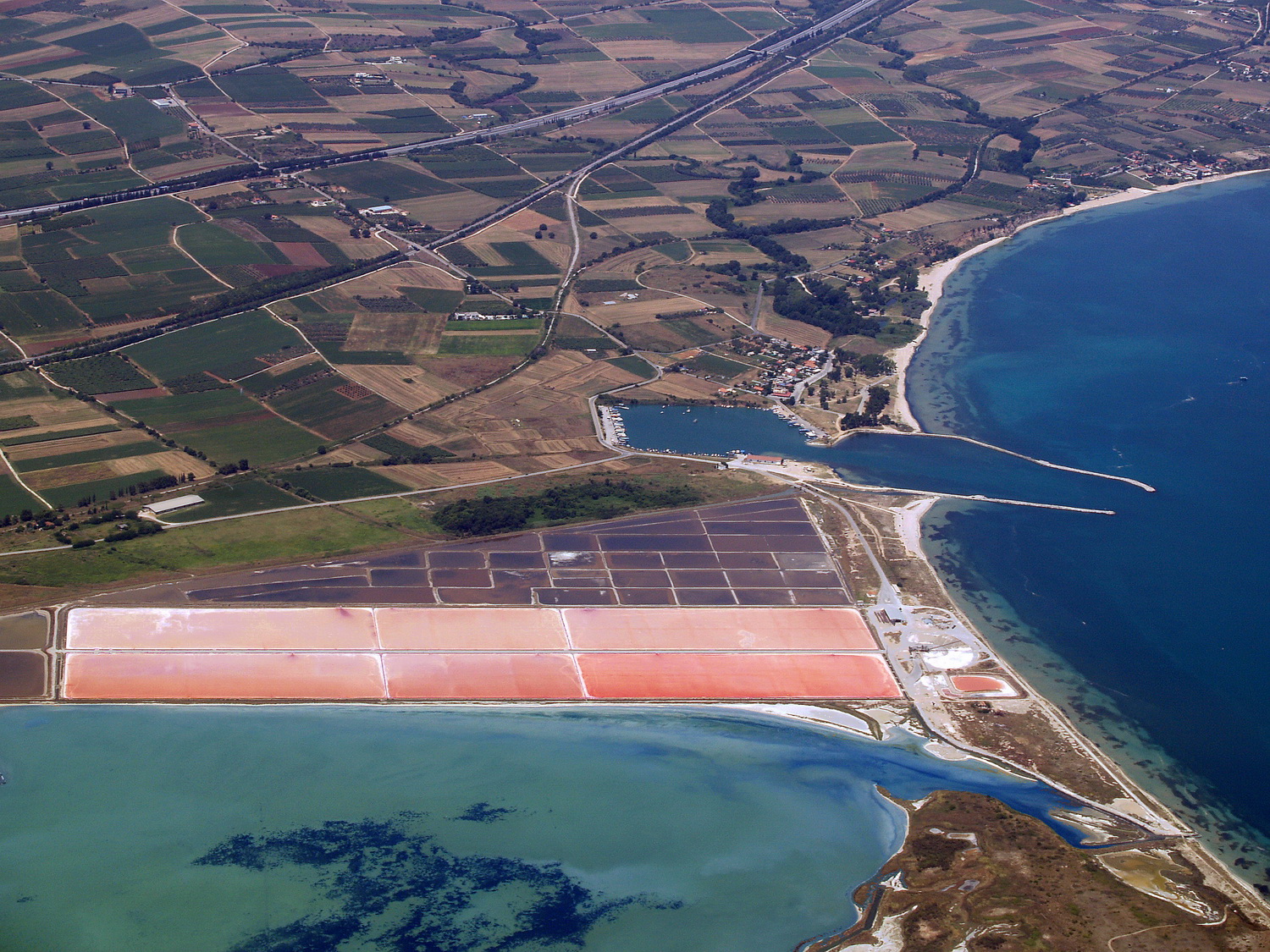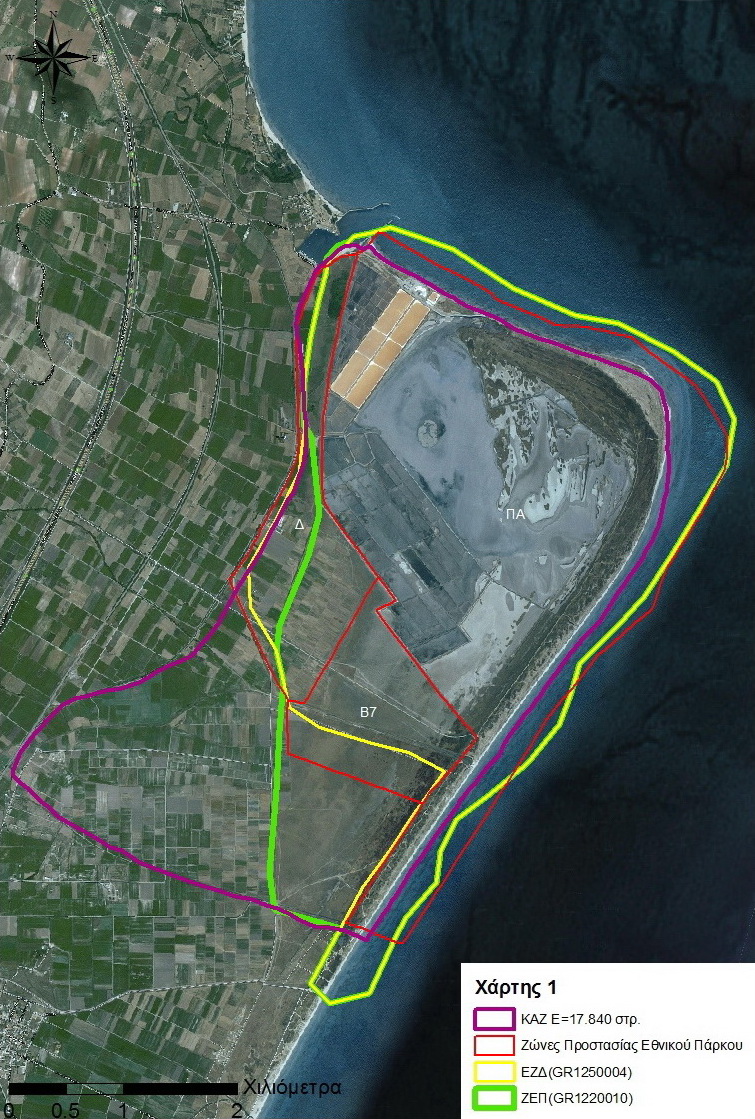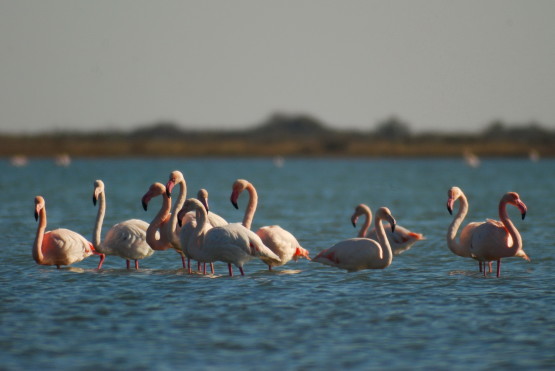National Park
Alyki Kitrous wetlands
At the southern end of the protected area lies the wetland of the Lagoon of the Alyki Kitrous. This region extends over approximately 1,500 hectares, including the lagoon of Kitrous, with its salt production unit, as well as the wetlands extending to its south, and reaching Korinos.
This whole region is particularly valuable as to the biodiversity it hosts and mainly as to its avifauna, its herpetofauna as well as the flora to be found there, thanks to its great diversity of habitats. These habitats range from the shallow lagoon waters, to its southern salty water marshes, the coastal scrubland and the sand dunes flanking the coastal zone.
The region belongs to the Natura 2000 network as the ‘ALYKES KITROUS – BROADER REGION’ Special Preservation Zone (code GR1250004) ranging over 1,440.56 hectares, while a part of it ranging over 1,558 hectares belongs to the broader avifauna ‘DELTA OF THE RIVERS AXIOS-LOUDIAS-ALIAKMON-ALYKES KITROUS» Special Preservation Zone (code GR1220010).
The lagoon
The lagoon at Alyki Kitrous extends at a point where the earth juts into the sea, Cape Atherida, and it hosts great numbers of coastal birds who feed, overwinter and reproduce here. Especially in winter, the lagoon offers impressive moments, thanks to the thousands of flamingos who gather in its shallow water.
The lagoon, extending over about 350 hectares, is 1.5 m deep at most and is virtually cut off from the sea, as the saline water enters from a very small channel of 4 meters in width, where the seawater flow is controlled by a small sluice gate. Water management is undertaken by the Ellinikes Alykes SA company which operates within the lagoon and constitutes the second largest and most dynamic salt producing unit in the country. The water level and salinity depend on the ebb and the flow of the tide, as well as on the operation of the pump stations, the rainfall and evaporation.
The sand dunes
A sandy strip featuring dunes divides the sea from the lagoon at Alyki Kitrous. Such coastal dunes are the result of the activity of the sea and the wind and constitute a natural barrier protecting the hinterland from floods and strong winds, and preserving crops from saline water.
The dunes are the most silent part of the wetland and this silence gives the impression of a lack of life. In reality, these dunes are bursting with life: birds, insects and arthropods live there, while the populations of reptiles there are extremely important.
In the region to the south of the salt production units lies the ‘tortoise paradise on earth’. Undisturbed by human presence, here live the most dense tortoise populations in the world!
Among the plants of the region, it is worth mentioning the sea lily. It is a bulb plant typical of the dunes coastal zone and one of the most beautiful plants in the Greek flora, protected by special legislation. Its white flowers with their fine aroma bloom in August, while in the autumn, the sand is filled with its seeds, which resemble small charcoals.
The salt marshes
Salt marshes extend to the south and southwestern side of the lagoon, at a place of halophytic vegetation. This is a region which floods periodically and is a feeding place for herons, as well as for hundreds of species of waders, such as the sandpipers. Small raptors like the sparrowhawk and the common kestrel, as well as bigger ones, like the marsh harrier and the short-toed eagle, seek their food in these open areas. Pratincoles, black-winged stilts and lapwings use halophytic vegetation to nest.
Flamingos in the Alyki Kitrous Lagoon
The impressive flamingos seem to prefer the Alyki Kitrous lagoon, thanks to its ideal depth, which does not exceed 1.5 m., and which thus renders it ideal for feeding, and because of the absence of human disturbance/activity. Here, they seek their favorite food, the small Artemia shrimp, thanks to which they acquire their intense pink plumage.
Flamingos are present all year long at the Alyki Kitrous lagoon, but especially in the winter, one can see them by the hundreds. In order to reproduce they travel to France, Spain, Turkey and in other countries of the Mediterranean. In the early 2000’s an attempt was undertaken to create a colony, with nests and laying in the lagoon, but the colony was abandoned for unknown reasons.
SOURCES
Hailey, A. and V. Goutner, 2002. Changes in the Alyki Kitrous wetland in northern Greece: 1990–1999, and future prospects. Biodiversity and Conservation 11: 357–377, 2002.



